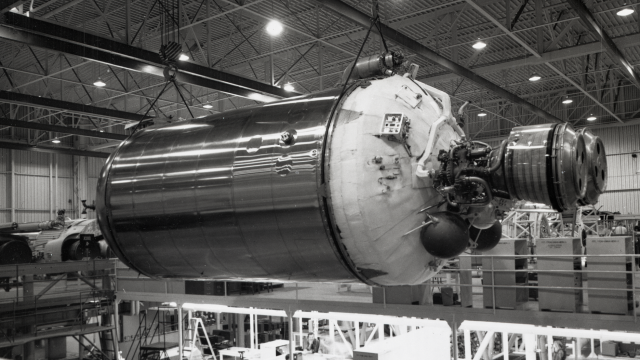Earth will soon welcome a temporary mini-moon, but this newly detected object, an apparent asteroid, might actually be of unnatural origin — a booster rocket dating back to the 1960s.
The object, designated 2020 SO, was spotted recently by astronomers using the Pan-STARRS1 telescope in Hawaii. It’s expected to become a temporary mini-moon, a phenomenon that happens from time-to-time, when passing asteroids make a few loops around Earth before resuming their celestial journeys around the Sun. This happened recently, for example, with an object called 2020 CD3.
Calculations show that 2020 SO’s sojourn as a mini-moon will start in October 2020 and last until around May 2021, reports EarthSky. NASA has catalogued the object in its JPL small-body database browser and designated it an asteroid, specifically an asteroid belonging to the Apollo family, on account of its physical and orbital characteristics.
Not to be confused with the Apollo space program of the 1960s and 1970s, Apollo asteroids are near-Earth asteroids that get no nearer to the Sun than 1.017 AU, in which 1 AU is the average distance between Earth and the Sun. Apollo asteroids also have a semi-major axis (half of the longest length of an elliptical orbit) greater than 1 AU and are no larger than 10 km in length. 2020 SO poses no threat to Earth, as it won’t get any nearer than around 50,640 km, according to the JPL database. The object is estimated to be between 6 – 13.7 meters long.
But here’s the thing — this object might not be an Apollo asteroid, or even an asteroid at all. Paul Chodas, the director of NASA’s Centre for Near Earth Object Studies, thinks it might actually be returning space junk, namely a Surveyor 2 Centaur rocket booster, which NASA launched on September 20, 1966. Here’s what he told CNN:
I suspect this newly discovered object 2020 SO to be an old rocket booster because it is following an orbit [around] the Sun that is extremely similar to Earth’s, nearly circular, in the same plane, and only slightly farther away [from] the Sun at its farthest point. That’s precisely the kind of orbit that a rocket stage separated from a lunar mission would follow, once it passes by the Moon and escapes into orbit about the Sun. It’s unlikely that an asteroid could have evolved into an orbit like this, but not impossible.
As Chodas points out, many clues point to this thing being of unnatural origin. 2020 SO orbits the Sun once every 387 days, which is very close to our planet’s 365-day orbit. It’s also moving very slowly, at a pace of 3,026 km per hour, which is achingly slow for an asteroid. Chodas reverse-engineered the object’s orbit, finding that 2020 SO would’ve been near our planet in late 1966, so the timing matches up nicely.
This particular NASA mission ended in failure, when the Surveyor 2 lander crashed near Copernicus crater on the Moon. The Centaur upper stage used in the mission flew past the Moon, never to be seen again — until, perhaps, now.
We’ll know more in late October when this thing gets close enough for scientists to perform new measurements, including spectrographic observations that will reveal its chemical composition. At that point, we’ll be able to tell whether 2020 SO is made from rock or synthetic materials.
Should we prove it to be a Centaur upper stage, it’ll mark only the second time that something like this has happened. As Chodas told CNN, a Saturn V upper stage from Apollo 12 returned for a visit in 2002.
